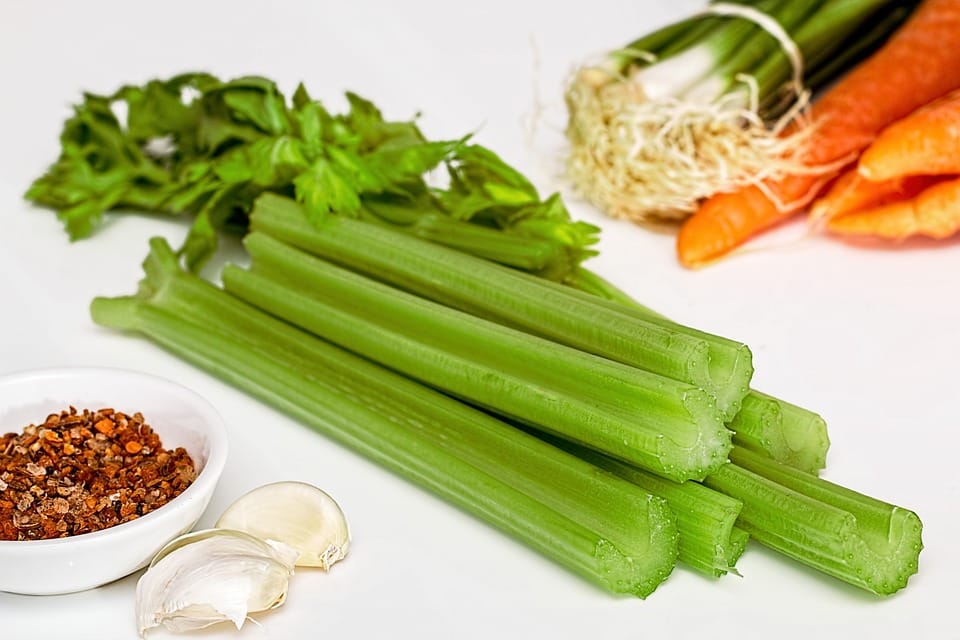It is a common belief that some foods have negative calories, meaning the body spends more energy digesting them than it receives. First of all, they include celery. We decided to check whether negative calories actually exist.
They write about negative calorie foods Media and blogs dedicated to the correct nutrition And diets. In addition to celery, the list usually includes include many vegetables, fruits and berries: cucumbers, spinach, asparagus, broccoli, zucchini, lettuce, peppers, carrots, beets, cauliflower, eggplants, radishes, turnips, tomatoes, beans, oranges, tangerines, grapefruits, apples, blueberries, blueberries, blackberries, cranberries, lingonberries, currants, raspberries, strawberries, pineapples, apricots, mangoes, peaches, figs, watermelons, melon. Stories about negative calories look encouraging - these products should allow you to consume unlimited amounts of food, not feel hungry, and at the same time create a calorie deficit in the body, which, in turn, will allow you to lose excess weight. In fact, foods with negative calorie content are a universal answer to the question “What should I eat to lose weight?”
Products consist from proteins, fats and carbohydrates in different proportions. Proteins, fats and carbohydrates always have some calorie content. The only product in nature that contains no proteins, no fats, no carbohydrates is simple water, it can conditionally be considered a product with zero calorie content (while calling water a product or food is not entirely correct). A calorie is a quantity energy, which is necessary to heat 1 g of water by 1 degree. Therefore, again conditionally, the consumption of cold water can be attributed to a process that only consumes calories, but does not provide the body with energy. If we talk about products in a more familiar sense to us, then the situation is a little different.
For example, here's how describe the leader in the rating of products with negative calorie content is celery: “100 g of vegetable is equal to 14 calories. To assimilate it, the body will have to spend twice as much - 28 calories.” The amount of energy that the body spends on digestion is called thermic effect of food. According to scientists, it makes up about 10% of our total energy metabolism. The other two components are physical activity and basal metabolism (the energy needed to maintain life). Basic metabolism, which includes breathing, heartbeat, excretory system, maintaining body temperature, etc., accounts for half to three-quarters of the total energy metabolism.
And celery and other foods that are considered to have negative calories, contain a lot of fiber - dietary fiber. Fibers there are two types: soluble and insoluble. Soluble fibers are converted into a gel-like substance in the colon during digestion, while insoluble fibers do not change in any way as they pass through the digestive tract. At the same time, digesting fiber is indeed quite energy-consuming process compared to the digestion of, for example, fats.
In order to test whether food consumption can take more energy than it provides, scientists from the University of Alabama (USA) conducted a study in 2019 experiment. The test animals were bearded lizards of the agamidae family, omnivorous reptiles whose digestive process is most similar to that of humans. For ten days the animals were fed exclusively celery. Following negative calorie logic, the lizards would have experienced such a significant energy deficit that they would have died of exhaustion by the end of the experiment. However, this did not happen, the animals were alive, moreover, judging by the analyzes performed, they still received energy from food.
DiverDave, CC BY-SA 3.0, via Wikimedia Commons
On average, the net gain (that is, the amount remaining after digestion and excretion from the body) of energy in lizards was 24% of the calories contained in celery. Scientists have derived a formula for calculating net energy gain and analyzed, in addition to celery, other foods that are attributed negative calorie content as applied to humans. The list included broccoli, apples, carrots, grapefruits, tomatoes, cucumbers, watermelon, lettuce and blueberries. It turned out that the body on average will receive about 63–65% of the calories contained in these types of food. That is, these products can indeed be considered low-calorie, but by no means have negative calorie content.
Authors of the study let down Bottom line: “No matter how many calories a food contains, you will always get some amount. In the case of celery, there won’t be as many calories, but there will still be some.” Moreover, they note: eating a Big Mac with celery will not create a negative calorie balance that promotes weight loss.
Associate Professor, Department of Endocrinology, Sechenov University, Candidate of Medical Sciences Olesya Gurova explains: “The very concept of calorie content implies that kilocalories are a plus. If it took more energy to process a food than it puts into the body, it would have no nutritional value. Therefore, of course, the same celery or spinach has caloric content, just minimal.”
Thus, no matter how low-calorie the product is and no matter how much fiber it contains, our body will always spend less energy on digesting it than it receives in the process. This makes the idea of negative calories an unscientific myth.

Misconception
Read on the topic:
- What is a calorie?
- Is it true that separate meals are an effective way to lose weight?
- Is it true that spinach contains exceptional amounts of iron?
If you find a spelling or grammatical error, please let us know by highlighting the error text and clicking Ctrl+Enter.






